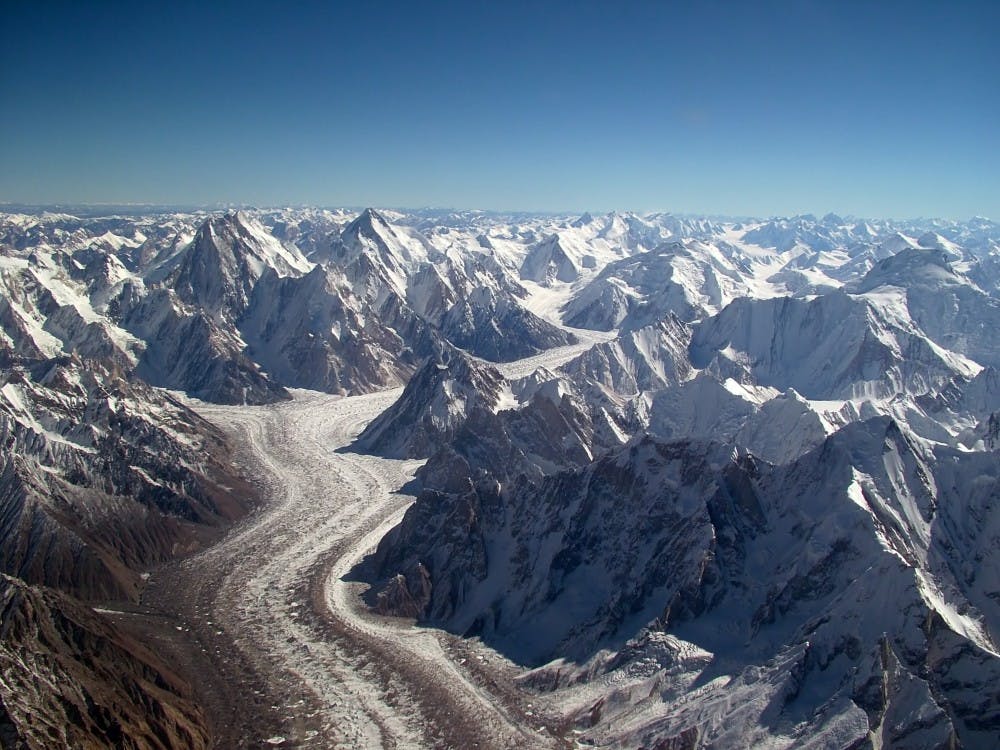By SABRINA CHEN For The News-Letter
Glacier Zachariae Isstrom, located in northeast Greenland, is losing mass at a rate of five billion tons per year according to a recently published study in Science. The glacier holds enough water to raise sea levels by more than 18 inches and has entered a stage of accelerated retreat.
“North Greenland glaciers are changing rapidly,” Jeremie Mouginot, lead author of the study and assistant researcher in the Department of Earth System Science at the University of California, Irvine (UCI), said in a press release. “The shape and dynamics of Zachariae Isstrom have changed dramatically over the last few years. The glacier is now breaking up and calving high volumes of icebergs into the ocean, which will result in rising sea levels for decades to come.”
Mouginot and the rest of the research team, including scientists from NASA’s Jet Propulsion Laboratory and the University of Kansas, used data acquired by a variety of international space agencies. These aerial surveys and satellite-based observations proved that the glacier has unanchored from its base and is slowly crumbling into the North Atlantic Ocean.
The team was also able to collect and record precise changes in the shape, size and position of the glacier using highly sensitive radar sounder, gravimeter and laser profiling systems. This data helped to draw conclusions about the state of Earth’s polar regions.
The researchers concluded that, due to global and ocean warming, the bottom of Zachariae Isstrom is being eroded by warm ocean water mixed with increasing amounts of meltwater that comes from the ice sheet surface. Mouginout noted that, in order to determine the future of the melting process, more oceanographic observations in the critical sector of Greenland are needed.
Eric Rignot, senior author of the study and Chancellor’s Professor of Earth System Science at UCI, added that the glacier is not only being hit from below, but is also being warmed from above.
“The top of the glacier is melting away as a result of decades of steadily increasing air temperatures, while its underside is compromised by currents carrying warmer ocean water, and the glacier is now breaking away into bits and pieces and retreating into deeper ground,” Rignot said.
Nioghalvfjerdsfjorden, another large glacier near Zachariae Isstrom, is also melting, but at a slower rate because it is protected by an inland hill. Added together, the two glaciers make up 12 percent of the Greenland ice sheet. If they both fully collapse, global sea levels will rise by more than 39 inches.
“Not long ago, we wondered about the effect on sea levels if Earth’s major glaciers were to start retreating,” Rignot said. “We no longer need to wonder; For a couple of decades now we’ve been able to directly observe the results of climate warming on polar glaciers. The changes are staggering and are now affecting the four corners of Greenland.”
According to the National Snow and Ice Data Center, the planet’s two major ice sheets, located in Greenland and Antarctica, make up 99 percent of the freshwater found on earth. The Center added that the ice sheets in Greenland, in particular, are declining at a pace that exceeds their rate of accumulation. This trend is due to warmer temperatures, which have caused an increased melting rate at the island’s edges.
Further research on the status of ice sheets and glaciers in Greenland and Antarctica is supported by funding from NASA’s Cryospheric Sciences Program.





